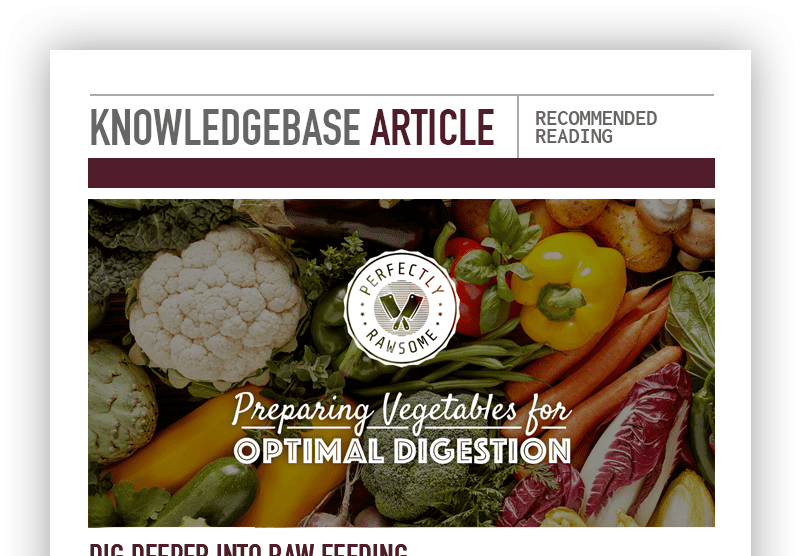There are instances when pets may experience digestive upset and need a bland diet while their stomach settles. Many raw feeders are left wondering what to feed in these moments when a bland diet is needed because their pet’s normal raw diet is too rich.
There are many reasons why a dog or cat could experience digestive issues such as gas, bloating, vomiting, and loose stools. It is important to get veterinary assistance when your pet exhibits a sudden change in behavior even though the diet has not changed. Veterinarians often recommend temporarily switching the pet to a bland diet while overcoming gastrointestinal sickness.
The feeding guidelines below are used when transitioning adult dogs onto a raw diet, and are also useful when digestive upset occurs. There are six components to constructing a bland diet.
Foods to Avoid
Eliminate fatty and nutritionally rich ingredients from the diet.
Lean Protein & RMBs
Select a lean protein and lean raw meaty bone to serve as the foundation of the bland raw diet.
Carbohydrate Options
Calories will need to come from carbohydrates in the absence of fat.
Fiber Inclusion
Helps support fiber fermentation in the colon and helps create firm stool.
Gut Goods
Bone broth, digestive enzymes, probiotics, and slippery elm bark are beneficial additives.
Long-Term Considerations
A bland raw diet is not intended to be fed long-term, considerations apply.
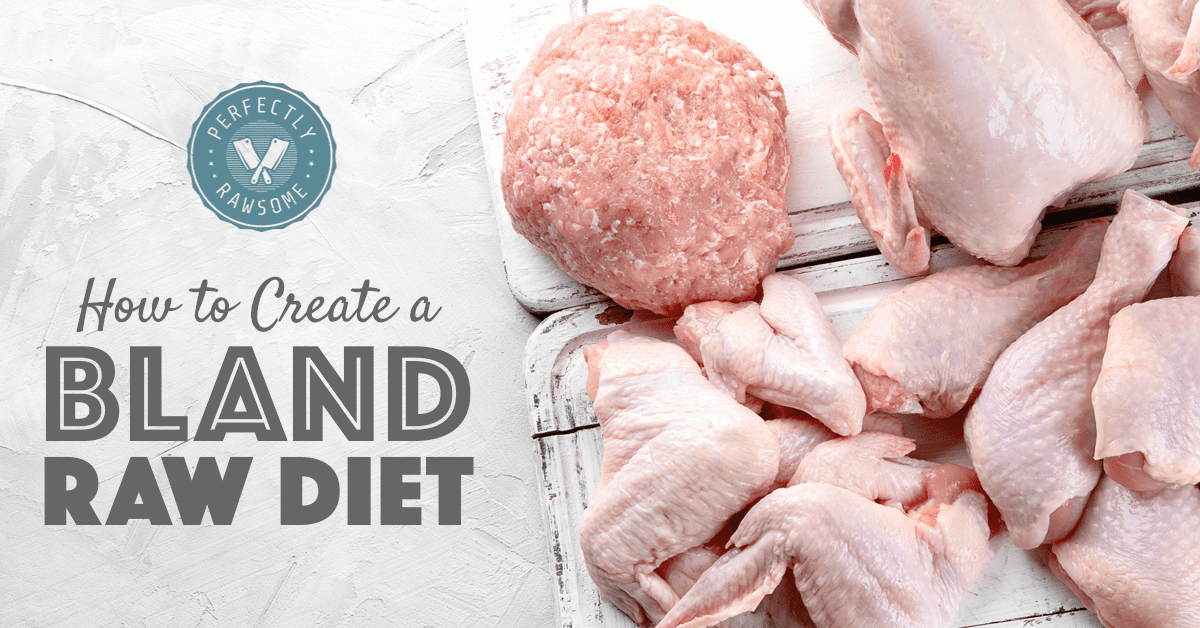
Foods to Avoid
The first step to creating a bland raw diet is to eliminate foods that are fatty and nutritionally rich because these ingredients often make gastrointestinal symptoms worse. These ingredients include:
Fatty Meat & Fatty Raw Meaty Bones
Avoid feeding fatty muscle meat and fatty raw meaty bones in a bland raw diet. Muscle meats to avoid are fatty pork (shoulder or butt), high fat ground beef (70/30, 80/20), and the skin from poultry (chicken, duck, turkey). Raw meaty bones to avoid include chicken backs, skin-on poultry necks (chicken, duck, turkey), pork ribs and tails.
Muscular & Secreting Organs
Avoid feeding muscular organs (heart, lungs, and gizzards) and secreting organs (liver, kidney, spleen, etc.) in a bland raw diet. These ingredients are higher in vitamins and minerals in comparison to plain muscle meat.
Seafood & Eggs
Raw fish (salmon, mackerel, sardines, herring, etc), shellfish (oysters and mussels), and raw eggs are eliminated from bland raw diets when digestive upset is present.
Additional Supplements
Do not feed any nutritional supplements in a bland raw diet. Some supplements cause digestive upset and eliminating these ingredients from the diet is one way to identify if any supplements are causing issues.
Lean Protein & Raw Meaty Bones
Once the fatty and nutritionally rich ingredients are eliminated from the diet, the only items remaining are lean muscle meat and lean raw meaty bones. Lean protein and lean raw meaty bones serves as the foundation of a bland raw diet.
Lean Protein
It is easy to identify lean raw protein because the amount of fat can be visually identified. In terms of feeding a bland raw diet, it is recommended to select a lean white meat protein over red meat protein – options include:
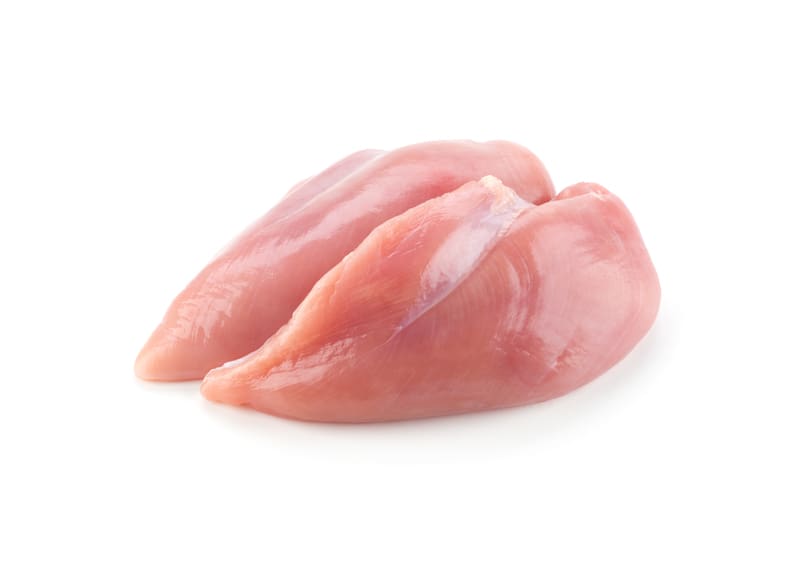
Boneless Chicken Breast
Macro Nutrients
The amount of calories, protein, fat, and carbs are based on 3.5oz (100g).
| Calories | 109kcal |
| Water | 74% |
| Protein | 22% |
| Fat | 1.6% |
| Carbs | 0% |
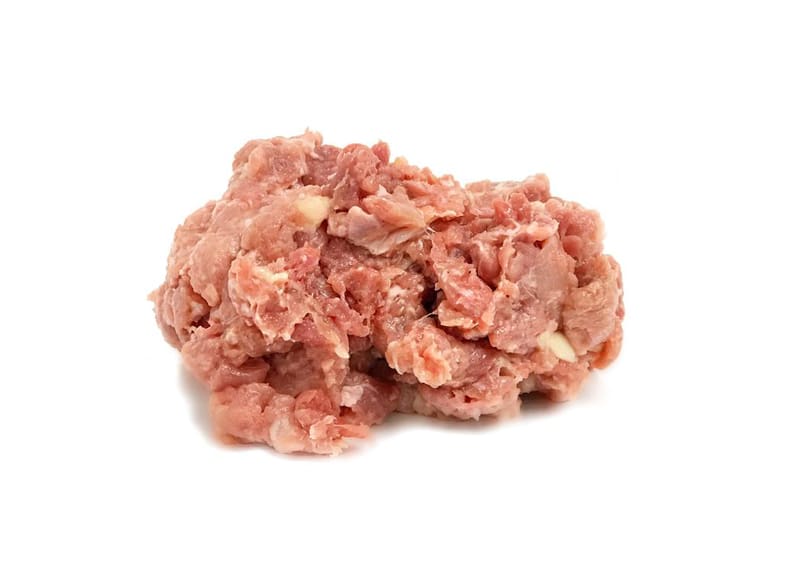
Ground Turkey, 93% lean
Macro Nutrients
The amount of calories, protein, fat, and carbs are based on 3.5oz (100g).
| Calories | 150kcal |
| Water | 72% |
| Protein | 18.7% |
| Fat | 8.3% |
| Carbs | 0% |
However, some pets cannot eat any poultry which would require selecting a lean red meat option. Lean red meat options include:
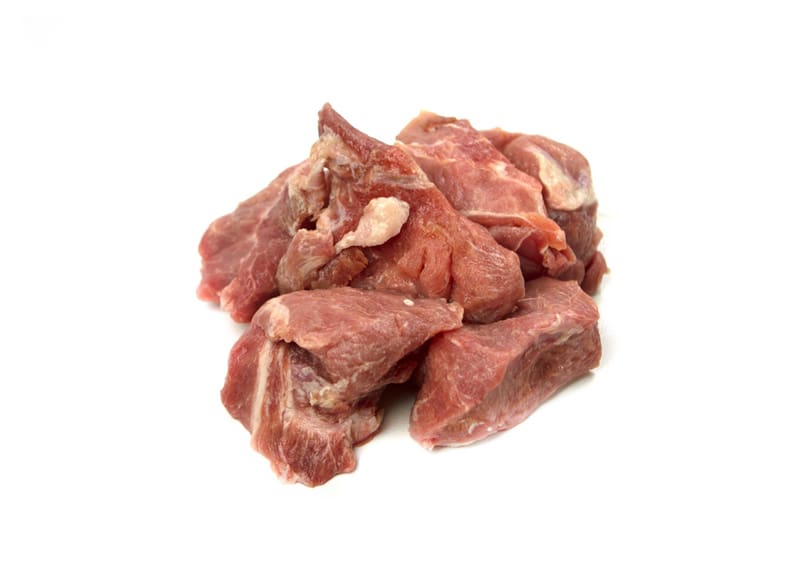
Pork Loin, Without Fat
Macro Nutrients
The amount of calories, protein, fat, and carbs are based on 3.5oz (100g).
| Calories | 132kcal |
| Water | 73% |
| Protein | 22% |
| Fat | 4% |
| Carbs | 0% |
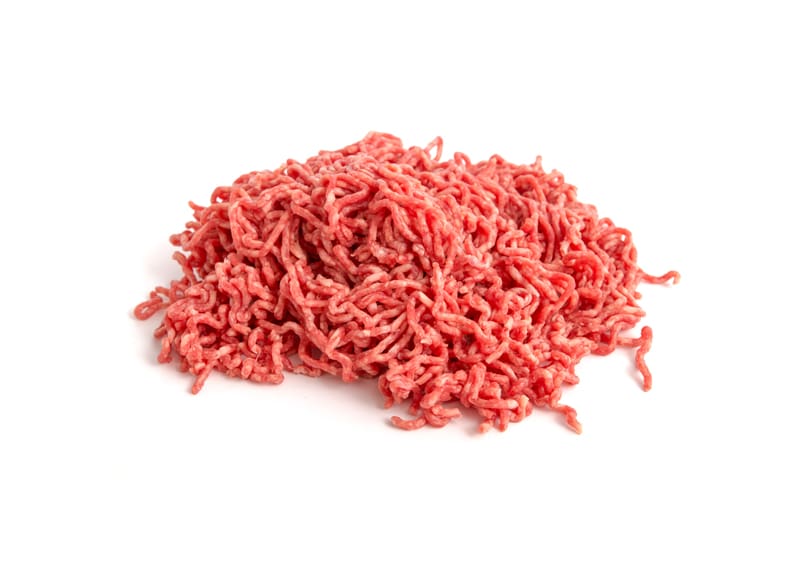
Ground Beef, 90% lean
Macro Nutrients
The amount of calories, protein, fat, and carbs are based on 3.5oz (100g).
| Calories | 176kcal |
| Water | 69% |
| Protein | 20% |
| Fat | 10% |
| Carbs | 0% |
Lean Raw Meaty Bones
Many raw meaty bones are naturally lean, especially when there is no additional skin attached. There are many options to choose from but be sure to remove the skin from all poultry raw meaty bones if they are selected. Lean raw meaty bone options include:
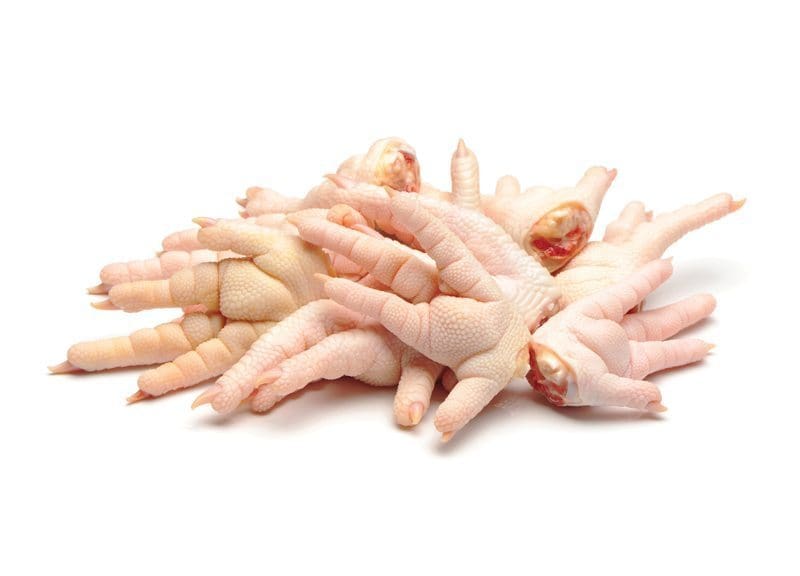
Chicken Feet
Macro Nutrients
The amount of calories, protein, fat, and carbs are based on 3.5oz (100g).
| Calories | 215kcal |
| Water | 65% |
| Protein | 19% |
| Fat | 14.6% |
| Carbs | 0% |
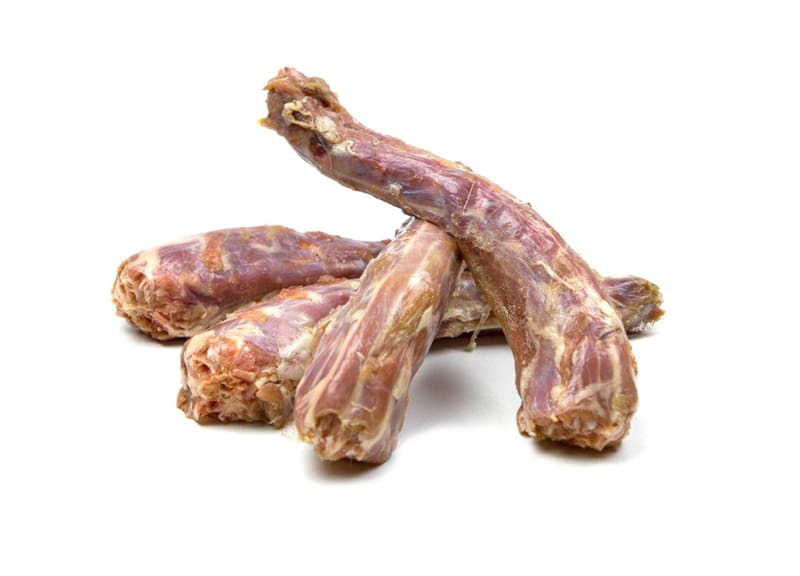
Turkey Neck
Macro Nutrients
The amount of calories, protein, fat, and carbs are based on 3.5oz (100g).
| Calories | 109kcal |
| Water | 74% |
| Protein | 22% |
| Fat | 1.6% |
| Carbs | 0% |

Rabbit
Macro Nutrients
The amount of calories, protein, fat, and carbs are based on 3.5oz (100g).
| Calories | 136kcal |
| Water | 72% |
| Protein | 20% |
| Fat | 5% |
| Carbs | 0% |
Carbohydrate Options
An energy source is needed when feeding a bland raw diet since the fat content has been significantly reduced. In these situations it is recommended to feed ingredients that provide higher amounts of carbohydrates, including starches. This is to ensure the diet has a sufficient energy source in the absence of raw fat. Carbohydrate options include:
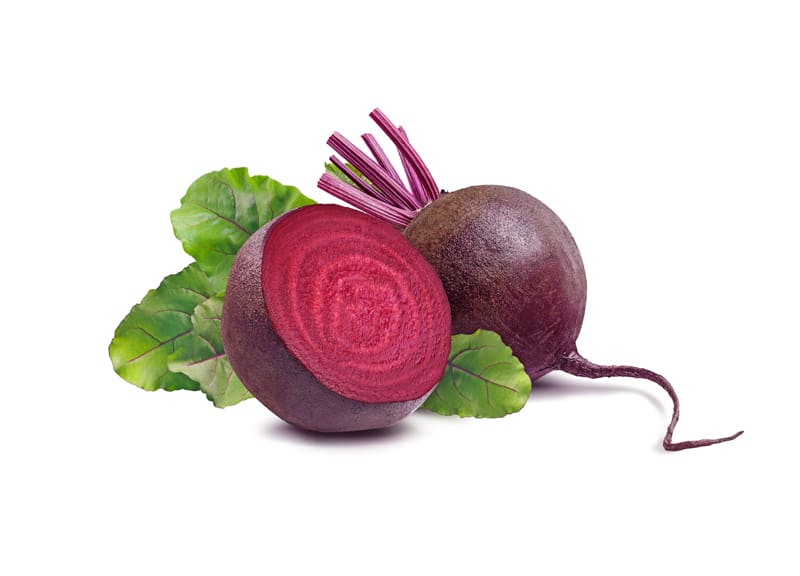
Cooked Beets
Macro Nutrients
The amount of calories, protein, fat, and carbs are based on 3.5oz (100g).
| Calories | 44kcal |
| Water | 87% |
| Protein | 1.6% |
| Fat | 0.1% |
| Carbs | 9.9% |

Cooked Carrots
Macro Nutrients
The amount of calories, protein, fat, and carbs are based on 3.5oz (100g).
| Calories | 35kcal |
| Water | 90% |
| Protein | 0.7% |
| Fat | 0.1% |
| Carbs | 8.2% |
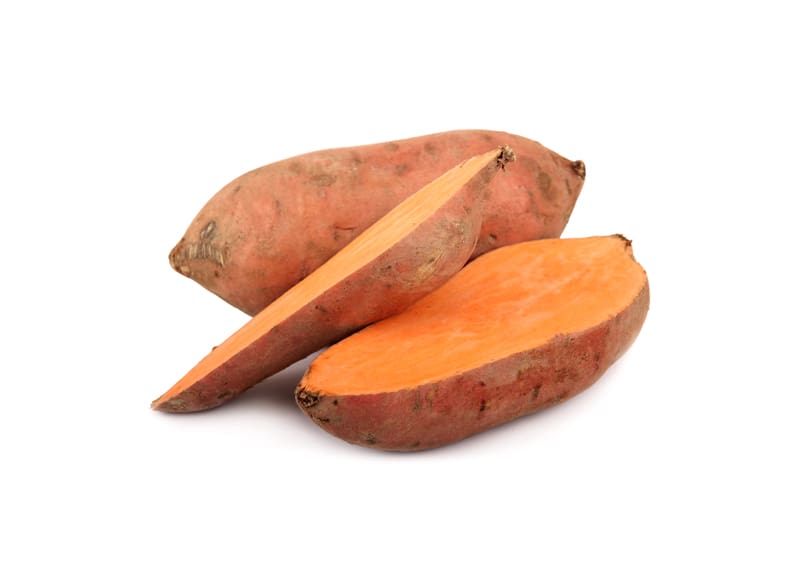
Cooked Sweet Potato
Macro Nutrients
The amount of calories, protein, fat, and carbs are based on 3.5oz (100g).
| Calories | 76kcal |
| Water | 80% |
| Protein | 1.3% |
| Fat | 0.1% |
| Carbs | 17.7% |
Prepare Vegetables for Optimal Digestion
Vegetables that are high in carbohydrates and starches must be thoroughly cooked before feeding.
Fiber Inclusion
In addition to supplying vegetables high in starches, it is also recommended to include vegetables high in fiber. The addition of fiber based foods help to create a firm stool as well as support fiber fermentation in the colon. Fiber based vegetables options include:
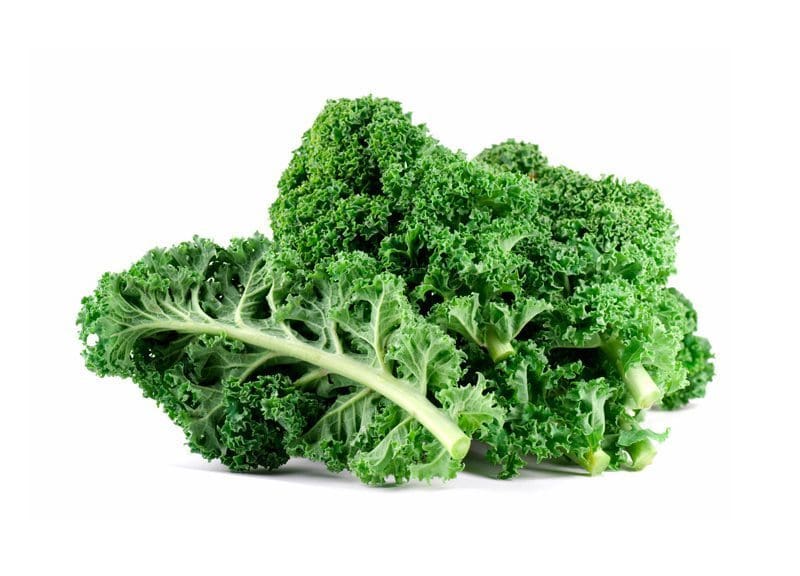
Kale
Macro Nutrients
The amount of calories, protein, fat, and carbs are based on 3.5oz (100g).
| Calories | 35kcal |
| Water | 89% |
| Protein | 2.9% |
| Fat | 1.4% |
| Carbs | 4.4% |
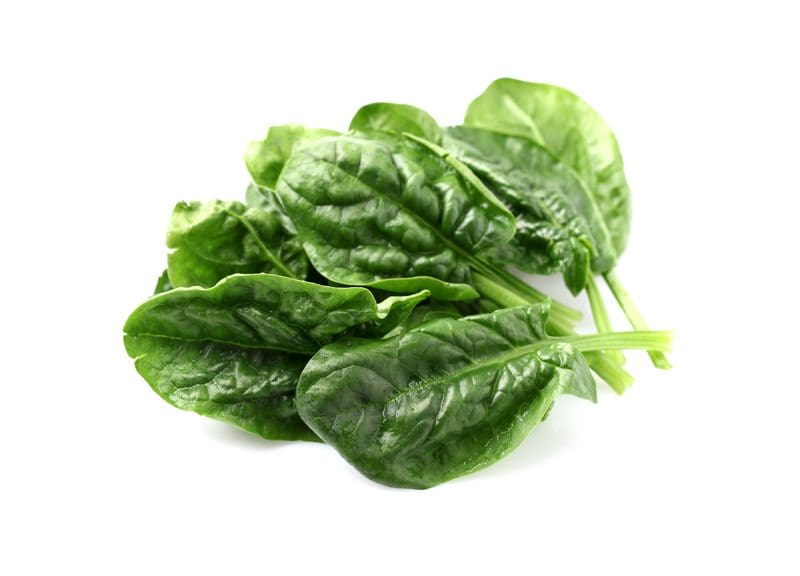
Spinach
Macro Nutrients
The amount of calories, protein, fat, and carbs are based on 3.5oz (100g).
| Calories | 23kcal |
| Water | 91% |
| Protein | 2.8% |
| Fat | 0.3% |
| Carbs | 3.6% |
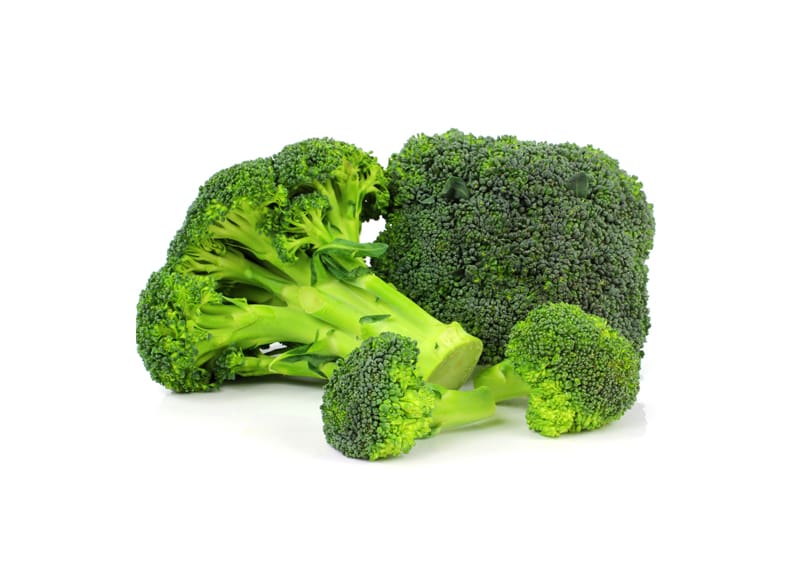
Broccoli
Macro Nutrients
The amount of calories, protein, fat, and carbs are based on 3.5oz (100g).
| Calories | 34kcal |
| Water | 89% |
| Protein | 2.8% |
| Fat | 0.3% |
| Carbs | 6.6% |
Gut Goods
In times of digestive upset, it is also recommended to provide ingredients that help to soothe the gastrointestinal tract. These ingredients help with calming the symptoms associated with digestive upset:
Bone Broth
Bone broth is a highly flavorful and palatable liquid is a great way to encourage sick pets to eat. Slow boil bones in water with gut soothing herbs and spices, like ginger, to create a broth to add into the bland raw diet. Make sure to skim and discard the fat cap and do not feed the cooked bones, only the broth.
Probiotics
The addition of probiotics helps introduce beneficial bacteria to the gastrointestinal tract. These beneficial bacteria help rebuild the gut flora to promote a stronger immune system.
Digestive Enzymes
Digestive enzymes play a key role in the digestion of protein, fat, and carbohydrates. Including digestive enzymes in times of digestive upset is beneficial to help support the body’s digestion process.
Slippery Elm Bark
This is a natural food that helps reduce inflammation associated with digestive upset. Slippery Elm Bark helps coat the gastrointestinal wall which provides a soothing effect in times of digestive upset.
Long-Term Considerations
A bland raw diet is not balanced and is not to be fed as a long term solution for digestive upset. It is important to determine the root cause of the issue and address it appropriately. If the pet routinely has digestive issues that are resolved by feeding a bland diet, the pet likely has an issue with high fat meals and needs a balanced diet with more carbohydrates instead of raw fat. In these instances it is recommended to slowly introduce organ content following step 3 of the raw feeding transition, incorporate whole foods for essential nutrients, and to use starchy vegetables as an energy source.
CLOSING COMMENTS
Lean proteins, carbohydrates, fiber, and gut supporting supplements are the recommended components to include in a bland raw diet. A bland raw diet is not intended to be fed indefinitely because it typically is lacking in many essential nutrients since organs, fatty fish, and other ingredients are not included.
However, if specific ingredients are included, a lean diet can be balanced with all essential nutrients while using lean proteins, carbohydrates, and fiber. This type of diet is good for dogs who do not tolerate high fat meals.

